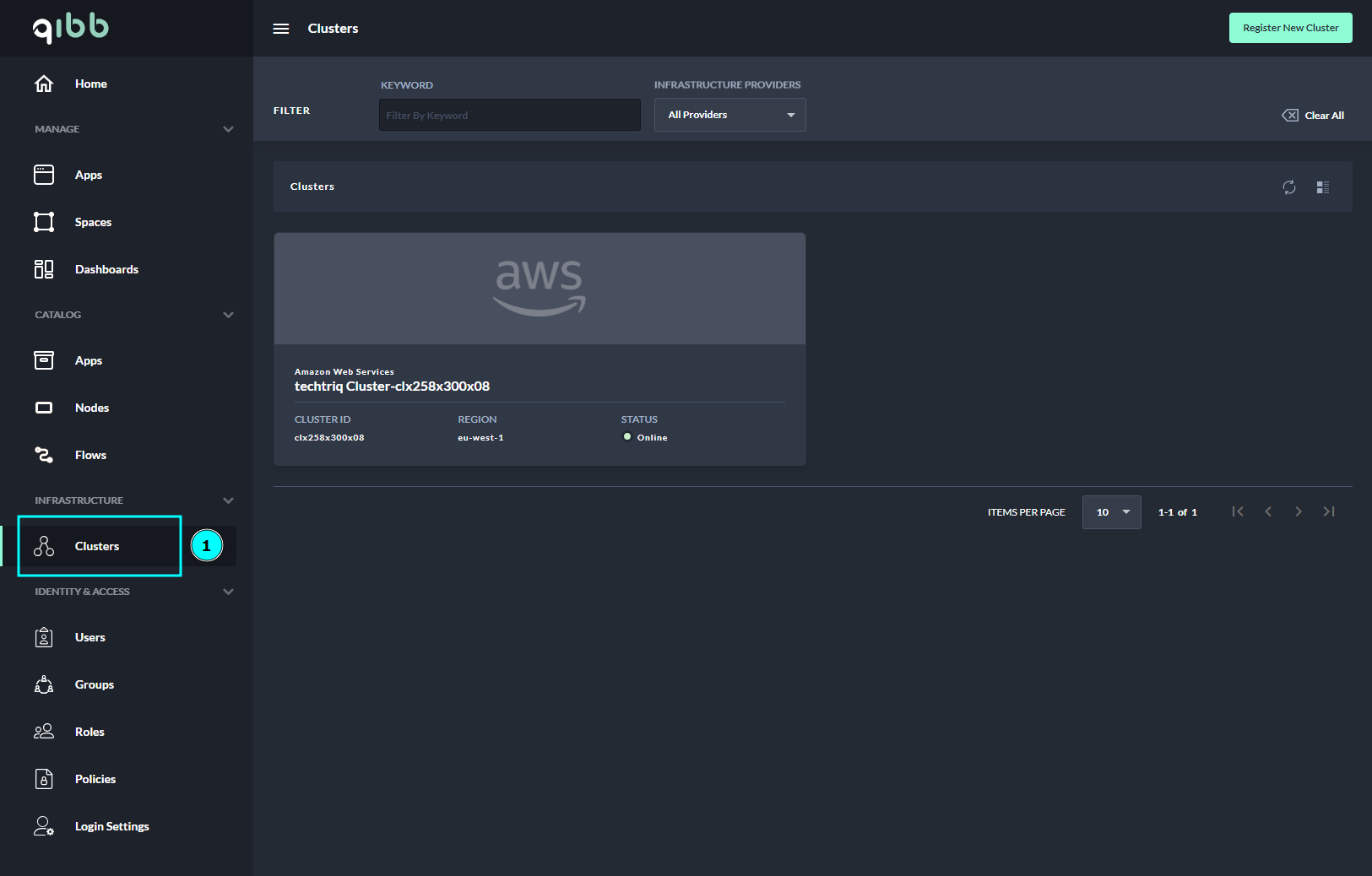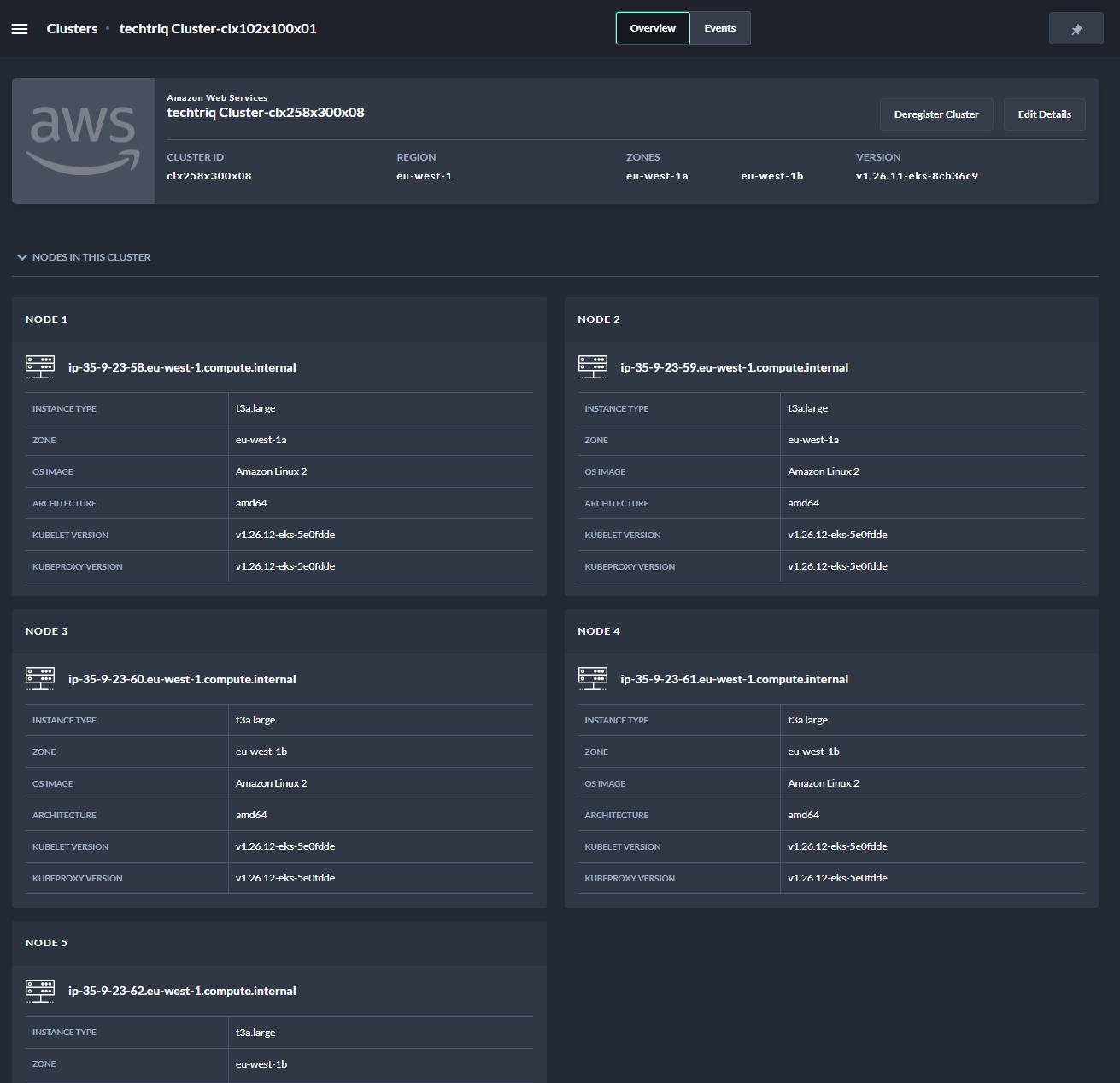Inspecting Nodes of a Cluster
ULTIMATE
To inspect the cluster nodes, follow the steps below:
Navigate to Infrastructure → Clusters.
You will see a list of clusters available on this platform that you can access and manage. If your platform manages many clusters, you may see more pages, where filters are helpful to quickly navigate and find the cluster you need. Using the filter, you can enter the keyword that identifies the corresponding cluster.
Use the Infrastructure Providers filter to quickly filter out the infrastructure in question and use the keyword filter to find the cluster you want to work with.
Infrastructure provider Filter | Description |
|---|---|
Amazon Web Services | Filter the clusters that are using AWS infrastructure. |
vSphere | Filter the clusters that are specifically hosted on VMware vSphere virtualization environment. |
Microsoft Azure | Filter the clusters that utilize Microsoft Azure cloud solutions. |
Google Cloud | Filter the clusters that are deployed and using Google Cloud infrastructure. |

List of Clusters in your Infrastructure
Table with cluster information and description
Cluster information | Description |
|---|---|
Provider | Name of the provider hosting the cluster. |
Name | Name was given to the cluster. |
Cluster ID | Unique identifier following the specific naming structure of the clusters. |
Region | Specific geographical location where the cluster is located in the world. |
Zones | Availability zone is isolated locations within data center regions from which public cloud providers originate and operate. |
Version | Version of the Kubernetes management platform. |
Status | Indicator for the current status of the cluster |
2. Select the cluster you want to inspect.
The platform can manage multiple clusters.

Individual Cluster Overview Page
Table with node information and description
Node information | Description |
|---|---|
Instance type | Specific identification of virtual machine that has preconfigured resources (CPU, Memory, Storage) used as a node in the cluster. |
Zone | Zones in which the node is located. |
OS Image | Operational system image used to run the node. |
Architecture | Architecture of the hardware that the operating system uses. |
Kublet version | Kubernetes primary node agent. It registers the node with the API server based on a list of requirements. |
Kubeproxy version | Kubernetes network proxy that exists on all nodes. It reflects the services defined in the Kubernetes API on each node and can perform simple networking functions. |
The platform provides inspections for different clusters, so the instance types change depending on the type for which the cluster is used.
Next Steps
Find out how you can register a new cluster using the platform.
